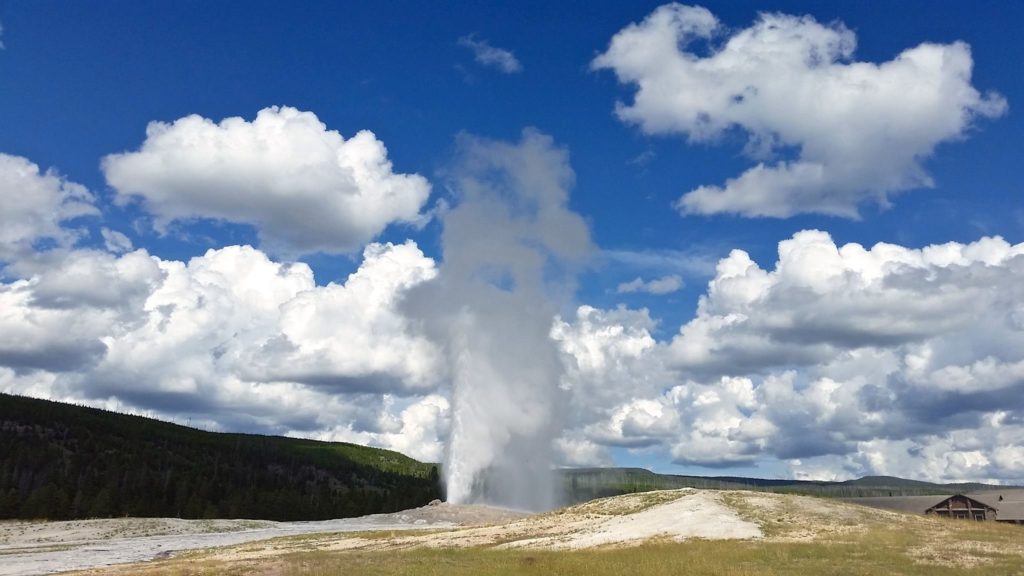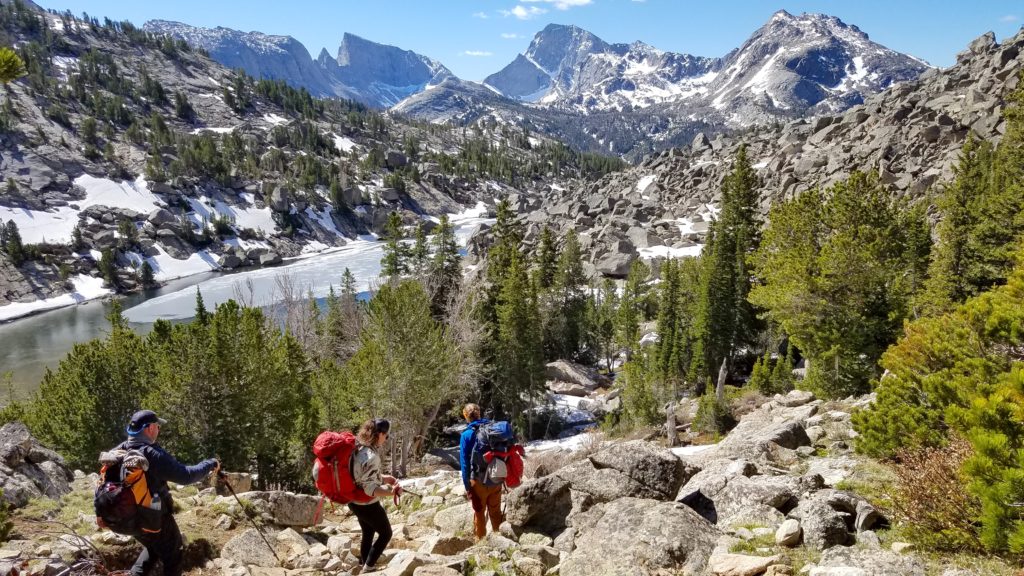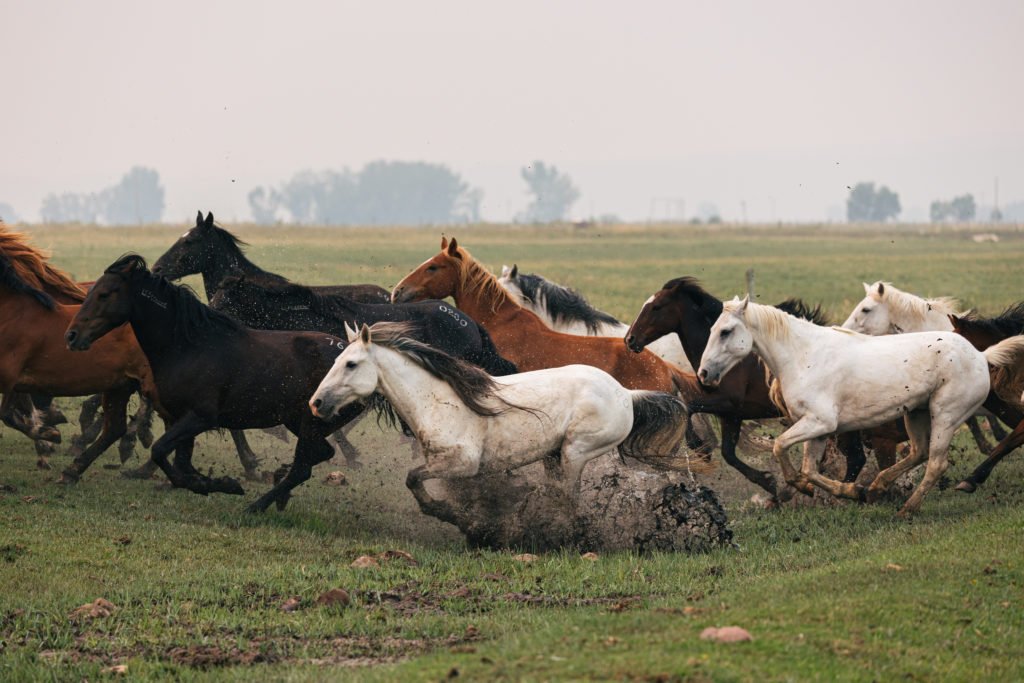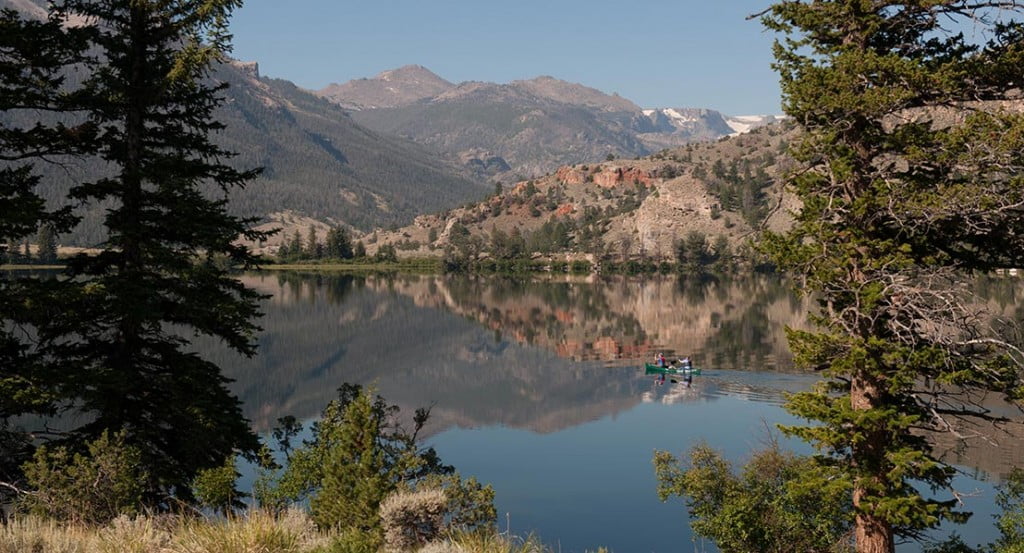March 31, 2022

It’s not hard to see why Yellowstone became the world’s first national park. It’s full of natural wonders and wildlife, spanning nearly 3,500 miles. Celebrating its 150th anniversary, Yellowstone National Park is on many radars this year, and rightfully so. But when you’ve grown tired of the crowds, find room to roam in Wind River Country.
Yellowstone is best known for its geological wonders such as the Grand Prismatic Spring, Old Faithful, Upper Geyser Basin and Mammoth Hot Springs. Did you know Wind River Country has geological wonders as well? Sinks Canyon State Park is named after its disappearing river. The Middle Fork of the Popo Agie plunges underground into a great cavern, known as the Sinks, and vanishes. About a quarter mile down the canyon, the river returns to the surface as a calm pool, known as the Rise. Above ground, the water should only take a short moment to travel a quarter mile, but dye tests have shown that the water actually takes over two hours to make the underground journey. Starting at the base of Sinks Canyon, the walls are made of Tensleep Sandstone. Many of the jagged cliffs, as well as the Sinks cave where the river flows into the ground, is Madison Limestone. Moving up the canyon, one of the largest cliff bands in Sinks Canyon is made of Bighorn Dolomite (also known as Main Wall—a huge climbing attraction). Then at the upper end of the canyon, the walls turn to Precambrian Granite.

Hiking is the most popular way to explore Yellowstone National Park. From day hikes to backpacking trips to jaunts on boardwalks, there are endless trails to discover in Yellowstone. Wind River Country has trails for everyone. For short, easy hikes, the Dubois Overlook, Wyoming Heritage Trail, Blue Ridge Fire Lookout, Sinks Canyon Nature Trail and Popo Agie Falls Trail never disappoint. Found at the northeast corner of the Wind River Range, Whiskey Mountain and Lake Louise are two of Wyoming’s hidden wonders. The Whiskey Mountain hike can provide views of the largest herd of wintering Rocky Mountain bighorn sheep in North America. The Wind River Range covers 2.25 million acres and includes two national forests and three wilderness areas with plenty of hiking trails and backpacking destinations. The Continental Divide Trail also passes through the Wind River Mountain Range and is a bucket-list trail for many recreationalists.

Yellowstone’s wildlife is nearly as popular as its geothermal features. Home to bears, wolves, pronghorns, bighorn sheep, moose, elk, bison and many other species, many people visit Yellowstone with high hopes of wildlife viewing opportunities. Places like Lamar Valley, Hayden Valley and the Grizzly and Wolf Discovery Center see heavy visitor traffic. Wind River Country is also home to a large variety of big game and wildlife. Dubois’ diverse wildlife includes big game species such as bighorn sheep, elk, mule deer, moose, antelope and black bear. Cougar and grizzly bears are occasionally sighted, as are wolves. Looking for wild horses is another fantastic way to explore Wind River Country. And when you find them, Wind River Country’s landscape provides a dramatic scene with a sweeping backdrop of snow covered peaks, or a desert landscape. The Wind River Wild Horse Sanctuary offers up-close tours of wild mustangs. Another great place to discover animals native to Wind River Country is the National Bighorn Sheep Center. Learn about bighorn sheep, then take a tour for a chance to see them in their natural habitat—truly a once in a lifetime experience!

The Grand Canyon of Yellowstone is a stunning feature that captivates millions of visitors every year. Wind River Country has canyons, too. If you enjoy jaw-dropping views of steep canyon walls, be sure to check out Wind River Canyon. Located between Thermopolis and Shoshoni, US-20 winds through the Wind River Canyon with 2,500 foot walls on each side. The views along the way reveal millions of years of sedimentary rock layers. The railroad is snug against the sides of the cliffs, and the meandering Wind River makes its way towards the Wedding of the Waters.
Yellowstone Lake is a staple among the park landscapes. Situated at 7,733 feet above sea level, Yellowstone Lake is the largest high elevation lake in North America. Though it is a sight for sore eyes, the lake remains very cold year round and is not recommended for swimming. However, Yellowstone Lake also has the largest population of wild cutthroat trout in North America, making it a great lake for fishing. Wind River Country is home to 810 lakes and rivers. Some of the most popular lakes in Wind River Country are Boysen Reservoir, Ray Lake, Bull Lake, Dinwoody Lake, Torrey Lake, Trail Lake, Ring Lake, Ocean Lake, Worthen Reservoir, Frye Lake and Louis Lake. Whether you’re looking for a great fishing spot, a swimming hole, a place to kayak or a beautiful alpine lake for a hiking destination, there’s more than enough water for everyone to enjoy.

Check Yellowstone National Park off your list this summer in celebration of its 150th anniversary, then escape the crowds and come see what’s waiting for you in Wind River Country.
Posted in Notes From the Field